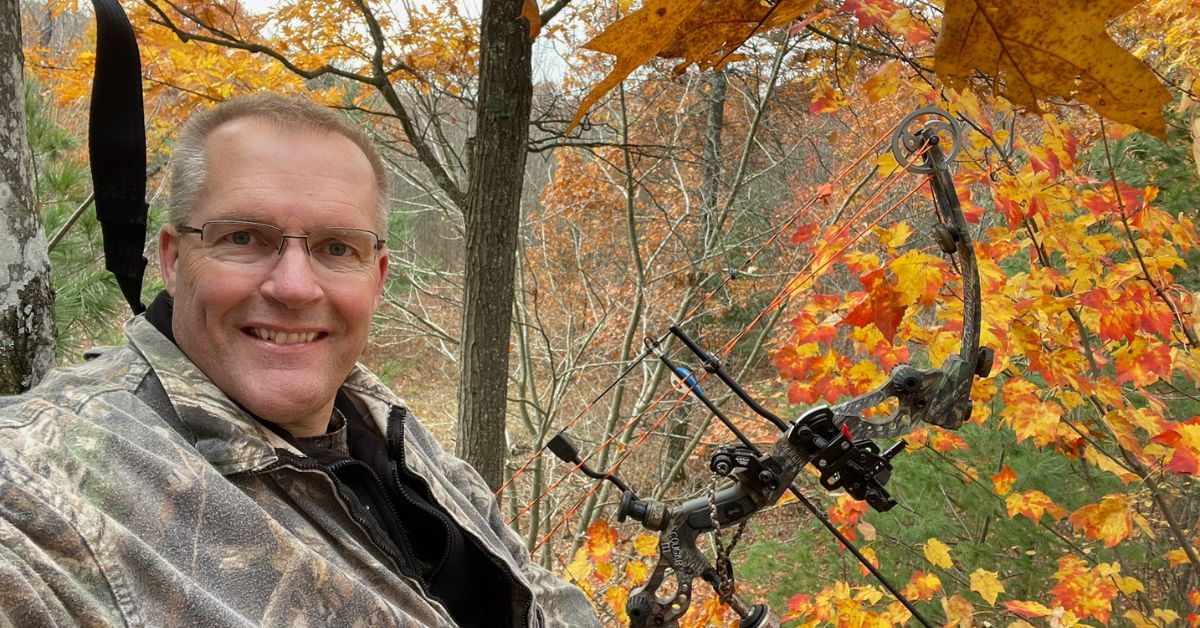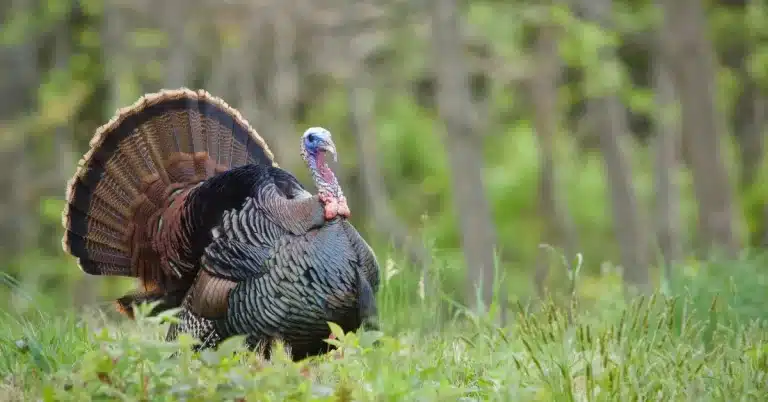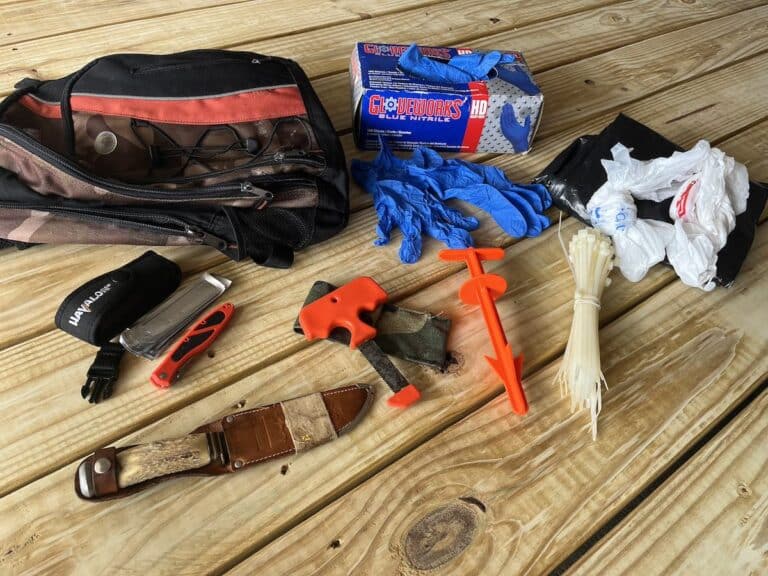Your Ultimate Guide to Tree Stands for Bow Hunting
Are you a bow hunter ready to invest in a treestand but overwhelmed by the options? Maybe you’ve been a ground-blind hunter for a few years but are ready to go higher. Whether you’re brand new to bow hunting or just looking for advice from a fellow bow hunter, I’m here to help. The three main types of tree stand for bow hunting that I’m going to discuss are hang-on treestands, climbers, and ladder stands.
Hang-on Treestands, the classics of the bunch, have been around forever. They’re those sturdy platforms that you hang on the tree trunk, offering a solid vantage point for your hunt. Climbers, on the other hand, are like the cool cousins—portable, versatile, and perfect for those who like to move around. And then there are Ladder stands, the reliable workhorses of the group, offering stability and ease of setup.
Each type has its pros and cons, so let’s break them down, and find the right match for your hunting style. Choosing the right treestand can make all the difference in your hunting success.
Hang-on Tree Stands for Bow Hunting
Hang-on stands, you know, they’ve been around for quite a while. They sort of evolved from those old-school wooden stands that hunters used to cobble together from two-by-fours and whatever else was lying around. Picture this, it’s a platform, maybe 2 by 3 feet at most, typically steel construction, initially powder-coated steel. But as time went on, they switched to materials like aluminum.
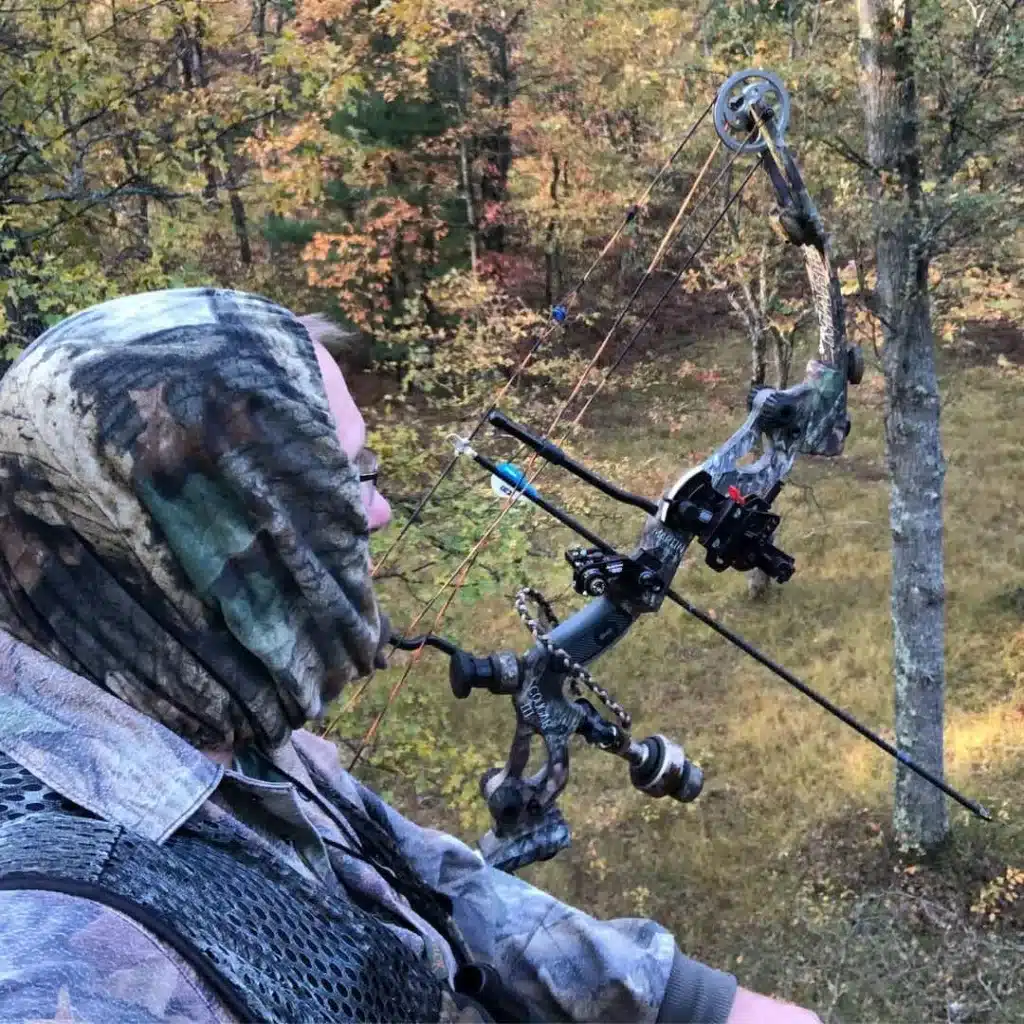
My experience with them was a bit unnerving, to be honest. You’re up in a tree, relying on these heavy-duty chains to secure the stand. Sometimes it was a real challenge to get a snug fit around the tree, depending on its diameter or angle. And talk about comfort, these things weren’t exactly plush. You’d have this fold-up canvas seat, minimal room, no armrests—just you and a tiny platform for your feet.
Back in the day, some hunters used screw-in spikes to attach the stands. They were like these L-shaped spikes, about a quarter-inch thick, screwed into the tree starting from the base. But, you know, those fell out of favor. They caused damage to trees, and some folks just left them year-round, which wasn’t cool. Plus, if you slipped, those spikes could do a number on your leg.
Still, you can find hang-on stands out there if you’re into that sort of thing. Mostly on private land where regulations aren’t as strict. But on public land, forget about it. They’re a big no-no. So, yeah, hang-on stands were among the first choices for archers back in the day.
Best Hang-on Tree Stand:
Check out the Millennium M100U Ultralite for lightweight mobility, a large platform, and extra safety with a long rope and prusik knot. It’s smart construction from rugged aluminum, weighs 13.5 pounds, and holds up to 300 pounds. For more details and product reviews, check it out on Amazon.
A cheaper option with good reviews is the Big Game Captain XL https://shop.biggametreestands.com/captain/
Climbing Stands for Bow Hunting
Climbing stands, they’re like the cool cousin of hang-on stands, you know? Picture this: two platforms, connected by a rubber-coated cable that wraps around the back of the tree. One platform, about a foot and a half wide and two and a half feet long, sticks out from the base of the tree, giving you a spot to stand. You strap your feet into these stirrups on the platform, and then there’s the seat part, separate from the platform, also wrapping around the tree. It’s got this foam pad with harness straps woven in for safety.
Here’s the deal with a climbing stand. You start by wrapping the upper part of the climber around the tree, just like the bottom. And between the two pieces, there’s this safety rope, so if the bottom slips while you’re climbing, you won’t take a tumble. So, you stand on the platform, lean your weight onto this bar on the upper part, facing the tree, and kinda sit on it. Your weight’s supported by the upper part and the cable around the tree. Then, you lift your knees, raising the bottom platform, and those teeth on the bottom bite into the tree, giving you a foothold to move up. You keep alternating between the upper and lower parts as you climb.
I have been using a Summit climber for over eight years and highly recommend the model called the Summit Goliath SD.
Let me tell you, using one of these stands, you feel like you’re part of the tree itself. It’s all about trusting your gear and your technique, especially when you’re up there, just you and the forest.
Hang on Stands vs. Climbing Stands:
One big advantage of climbing stands is their mobility. They’re like the “Run-N-Gun” type of tree stand. You’ve got these backpack straps attached to both pieces, making them super easy to carry. They fold together nicely, so you can sling it on your back like a backpack and move around without much hassle.
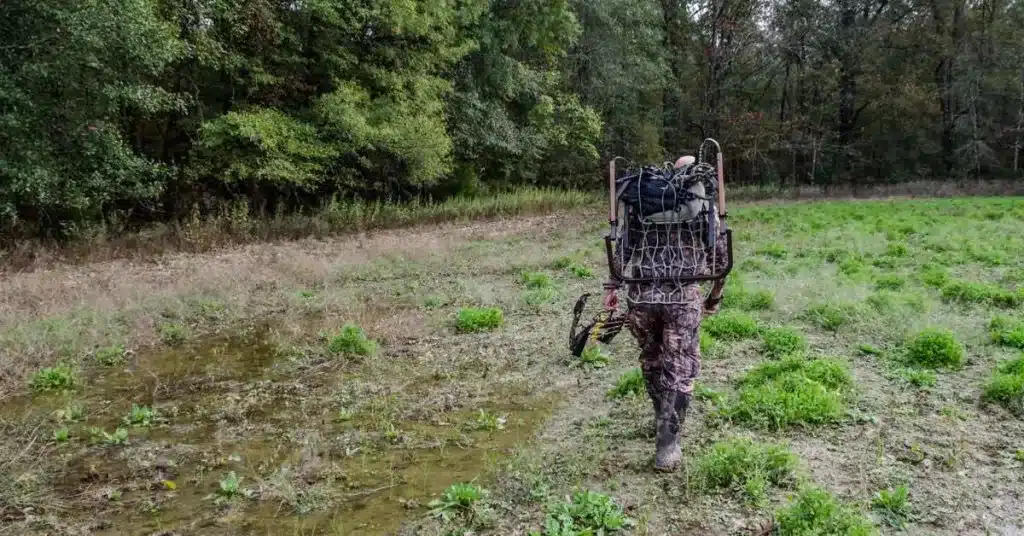
Hang-on stands, on the other hand, they’re pretty much a permanent fixture once they’re up. If you want to switch spots, you’ve got to take the whole thing down—platform, sticks, the works—or unscrew those spikes from the tree, which is a whole lot more time-consuming. Climbing stands win in the mobility department.
Lone Wolf Custom Gear has great options for Hang-on and Climbing stands. The product reviews are solid.
Ladder Stand Climbing System
Ladder stands are pretty straightforward, just like the name says. They’re essentially ladders made of lighter weight steel, designed to reach different heights. Typically, they come in multiple sections to keep them compact. You might find ones with three ladder sections, getting you up to around 12 feet, or even higher for some lightweight options.
The top portion of the ladder is a bit bigger than the bottom parts. It’s basically an extension of the individual pieces that get you off the ground. At the top, there’s an L-shaped bend where you sit, and there are handrails by your hips for stability.
Setting up is a team effort sometimes, as you position the ladder in front of the tree you’re using. Then, you simply walk it towards the tree and lean it against the trunk. There’s usually a support that attaches to one of the ladder rungs, around 3 to 4 feet long, to keep things sturdy as you climb. You’ll secure it to the tree with paracord or a locking chain to make sure it’s snug.

Once you’re at the top, your ratchet strap will secure the ladder stand around the tree and attach to the seat portion, keeping everything tight and secure. One of the perks of a ladder stand is the quick setup and how easy they are to climb once they’re in place. Plus, you can put them in pretty much any tree without much hassle, adjusting them even if there are branches in the way.
But, they’re not without their drawbacks. They’re not the kind of stands you can take down and move to a new spot in the same day. It takes some effort to set them up initially. Also, they can get noisy with all the nuts and bolts if they’re not secured properly. And if left out in the elements year-round, they can wear down and become weakened, with critters possibly causing damage to the stability straps. So, it’s something to keep in mind for safety’s sake.
Materials for Ladder Stands
Let’s dive into the materials used for ladder stands and how they affect safety and durability.
Steel was the OG material for ladder stands. It’s basically square tubing with a brown powder coat finish. Some manufacturers add a gritty texture to the paint for better grip on the rungs. Steel stands are sturdy but on the heavy side.
Then there’s aluminum, which is way lighter. Personally, I find aluminum stands a tad more slippery due to their smoother surface, unless they’ve got some texture milled into them.
Now, titanium stands are the new kids on the block, known for their extra strength and durability.
But wait, there’s more! Ever heard of tripod stands? Picture three big poles arranged like a teepee. You can set them up at different heights—say, 12, 15, or 18 feet. Each leg has ladder steps built in, leading up to a platform at the top where you can swivel around in a chair. It’s like having a 360-degree view from up high.
Best Ladder Stands
I’ve been a fan of Summit for years, especially their climbers. I’ve had mine for ages and it’s been solid. Comfort-wise, it’s top-notch. You can sit in it all day without feeling like you’ve been perched up there forever. And if you do need to stretch your legs, there’s plenty of space to stand up without feeling cramped.
One thing I really appreciate is how versatile it is. You can actually swivel around the tree to change your view. Just unhook your feet from the bottom part, rotate the platform, and boom, you’re facing a whole new direction without leaving your perch. It’s those little details that make a big difference when you’re spending hours up in a tree.
Weight Capacity
When it comes to weight capacity and platform size, there are a few differences among ladder stands. Some manufacturers specialize in stands that can handle heavier hunters. For example, Ol’Man Tree Stands and Summit offer models with larger capacities, up to around 300 lbs. These stands typically have wider platforms and seating areas, with beefier welding and stronger tubing for added durability. They might also use thicker cables for tree attachment.
Platforms
As for platform size, it varies based on the stand’s design and intended use. You’ll find ladder stands with aluminum, steel, or titanium tubing ranging from half an inch to two inches in diameter. The larger the tubing, the sturdier the stand, but also the pricier.

When it comes to platform sizes, it’s pretty standard across the board. For climbers, you’re looking at a width of about a foot and a half to two feet. The foot platform, the part sticking out from the tree, tends to be around 24 to 30 inches deep.
Now, for ladder stands, the platforms might be a tad smaller. You’re not going to have tons of extra room to roam. Picture something like a square foot or maybe 18 inches square. It’s enough space to get comfortable, but you’re not throwing any dance parties up there if you know what I mean.
Bow Hunter Safety Concerns
Now, regardless of the stand you choose, safety should always be the top priority. Even when using a ladder stand, it’s crucial to wear a safety harness and tether yourself to the tree as you climb. This precaution applies to all types of stands—ladders, hang-ons, or climbers—and can prevent serious injury in case of a fall. So, always play it safe and use your safety gear without fail.
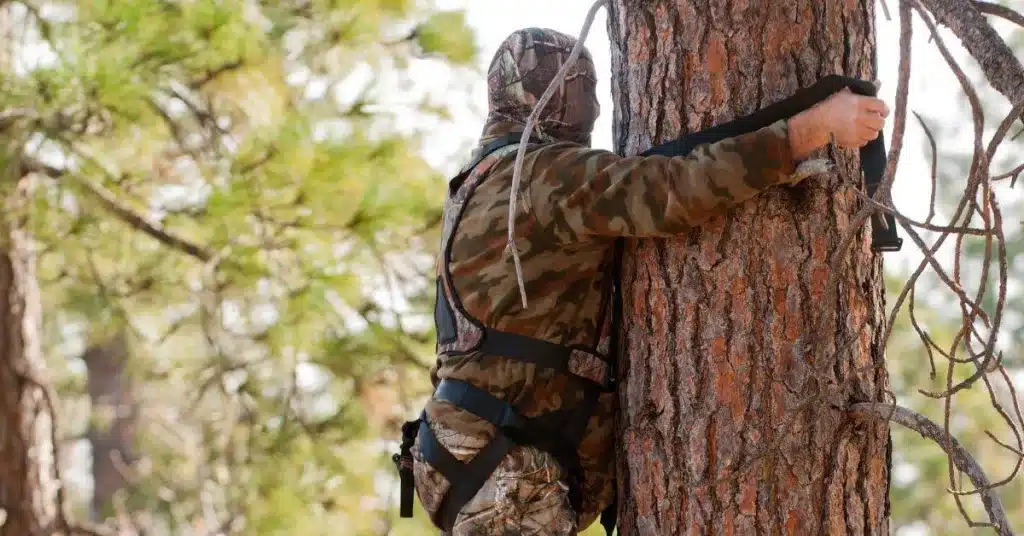
Comfort and Quietness
In my experience, if you want a quiet operation, go with a Summit climber. It’s all about the materials and construction. Made from aluminum, it’s pro-welded, so no nuts and bolts rattling around. The cables are coated in rubber, locking it in place around the tree silently. The seat cushion is like a foam pad with seat belts sewn in, allowing you to shift your weight or even stand up without a peep. Plus, the fabric is super soft and quiet against your hunting gear.
Ladder stands can be a bit noisier, especially if they’ve seen some wear and tear. Metal-on-metal contact affects how quiet they are. Over time, the nuts and bolts can rust, causing creaks and groans as you climb. Same deal with hang-on stands—they’re only as quiet as their hardware allows. But if you secure them snugly to the tree, you’ll likely have less noise to worry about compared to a clunkier ladder stand.
Mobility Challenges
If you’re dealing with mobility issues or you’re on the older side, you might be wondering which tree stand is the best fit. Climbers might not be the top choice since they require more physical effort.
So, what would I recommend? Probably a sturdy ladder stand, especially one built for larger folks. They tend to have stronger materials and a bit more space, which adds to the comfort level.
Now, what if you’re really tall? Well, honestly, height doesn’t matter much once you’re up in the tree. It’s more about how wide the seat is. So, go for a stand with a roomier seat to accommodate those long legs comfortably.
Advice for Beginners
If you’re new to hunting and not quite sure where to start, choosing the right tree stand can be a bit overwhelming. My advice? Dive into some videos first. There are tons of resources out there, especially on YouTube, that cover all three types of stands: ladders, climbers, and hang-ons. Watching a few of these can give you a good sense of how each one works and what might suit you best.
It’s always a good idea to practice with your tree stand before the season starts. Figure out how you are going to carry it into the woods and set it up. Start about 3 feet off the ground and then go higher when you feel comfortable.
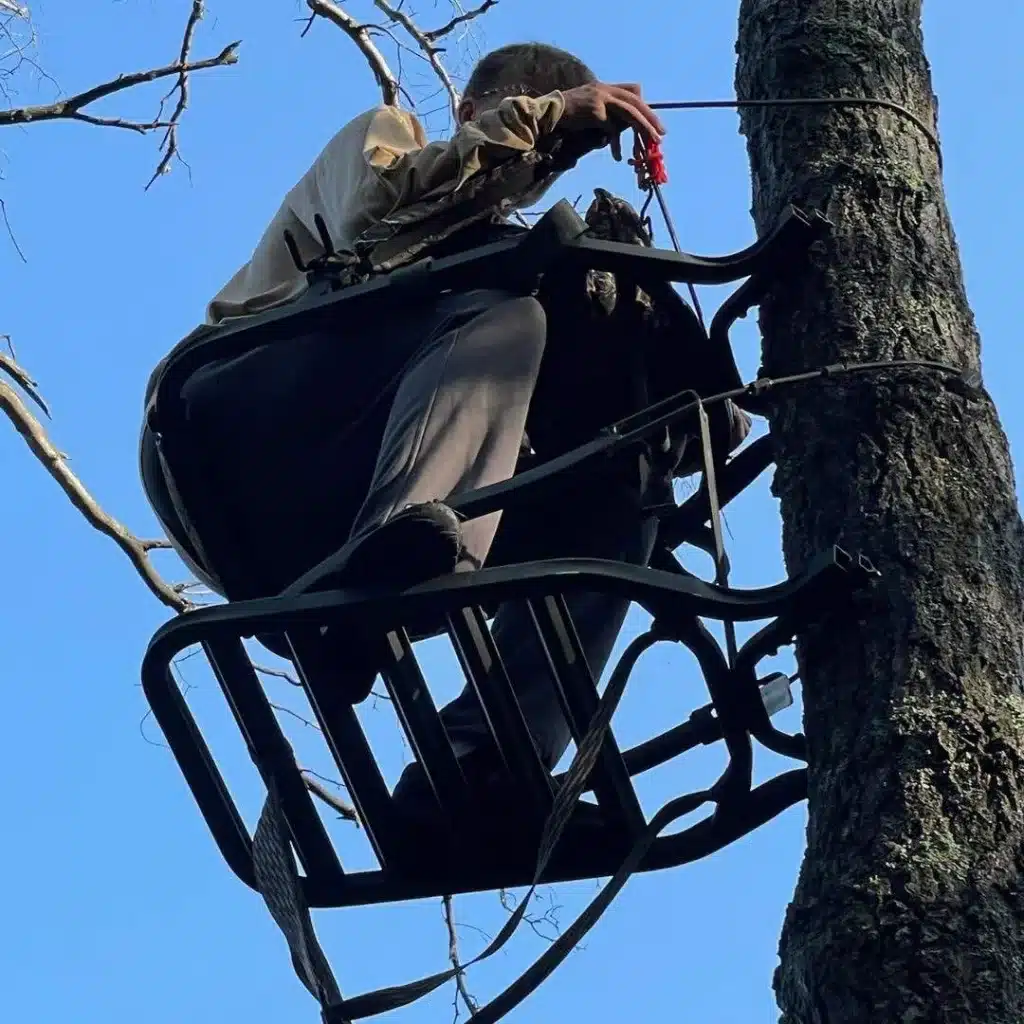
Now, when it comes to archery, I’d lean towards a climbing ladder stand. Why? Well, it offers more flexibility, especially if you’re heading out to public land where you can’t just start chopping down limbs. You’ll need to find a tree that’s free of low-hanging branches, and climbers make it easier to maneuver around those obstacles.
So, for a first-timer venturing into the world of tree stands for bow hunting, I’d say give a climber a shot. It’s a great way to ease into things while still enjoying the benefits of hunting from up high.
Mistakes with Tree Stands for Bow Hunting
- Secure it properly: First off, with ladder stands, sometimes they’re not secured properly. Maybe there’s not enough standoff support between the ladder and the tree, or the whole thing just isn’t anchored down right.
- Use a safety harness: Some hunters forget to use tethered safety straps up top to keep themselves secure. Never forget a harness, especially if you hunt alone.
- Going too high: It’s tempting to get as high as possible for a better vantage point, but it’s not worth the risk.
- Old equipment: Then there’s the issue of using worn-out stands. You might snag a bargain online, but if it’s seen better days, it could end up failing on you. I’ve heard horror stories of rungs breaking mid-climb because the stand was just too worn out.
- Not enough cover: Make sure you select a tree that is not too far out in the open. You want to have enough camouflage with other trees so that deer will not spot your movement.
Bottom line? Always check your gear for wear and tear before heading out. It might just save you from a nasty fall.
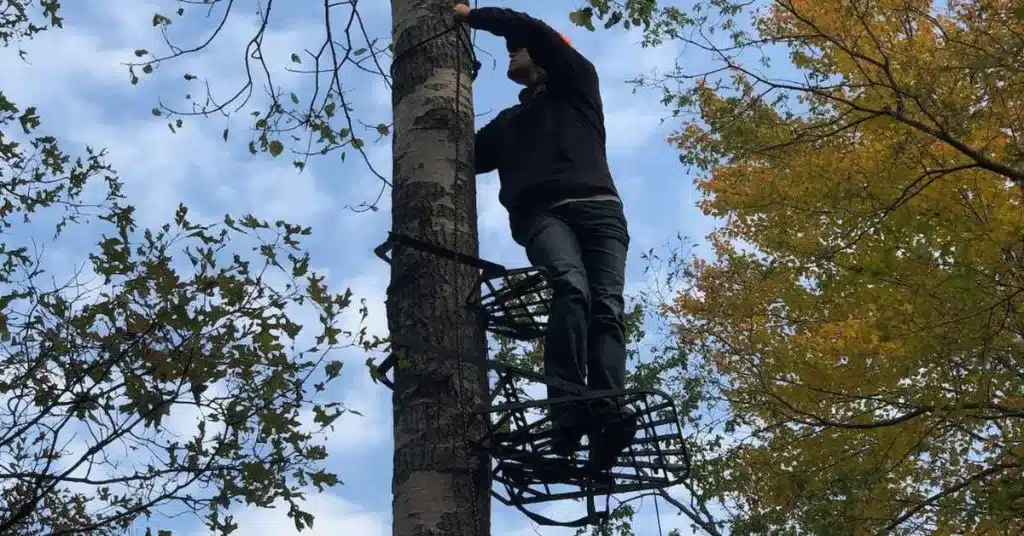
Bow Hunter Tree Stand Accessories
There’s a whole world of accessories out there for tree stand hunters during bow season. Keeping your gear organized is key.
First up, you’ll want a way to bring your bow up to you once you’re in the tree. You’re not climbing with your bow slung over your shoulder or strapped to your pack. That’s where climbing ropes or retractable mechanisms come in handy. They let you hoist your gear up once you’re safely secured.
Now, for bow holders, they’re a game-changer. Screw one into the tree, and it folds out, giving you the perfect spot to hang your bow within arm’s reach. Super convenient. And if you need a place to stash your backpack, S hooks or eye bolts are your friends.
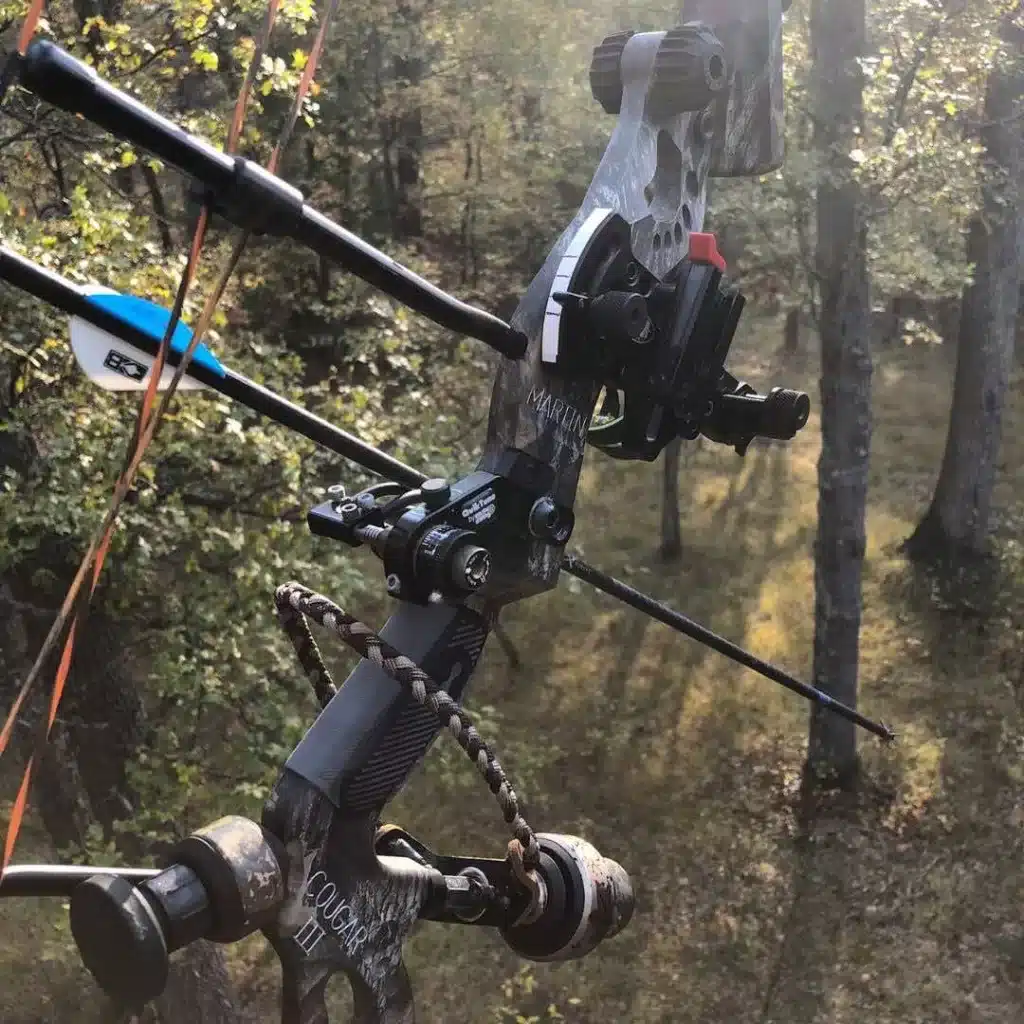
Best Gear Hangers:
For those rainy days, there are umbrellas designed to attach to the tree above you, keeping you dry and camouflaged. They’re a lifesaver when the weather turns.
Speaking of camouflage, there are all sorts of tricks to blend into your surroundings better. Camo skirting for ladder stands hides your legs, while attachments for climbers let you add foliage for extra cover. You can even get synthetic tree limbs to amp up the camouflage game. The right camouflage gear will also help you hunt with scent control in mind.
And let’s not forget about duffel bags with straps—perfect for hanging off the tree to keep your essentials close at hand. With so many options out there, you can deck out your tree stand setup to be as comfy and practical as possible. It’s all about having the right accessories to make your time in the tree more enjoyable and successful.
My Tree Stand for Bow Hunting Recommendation
For new hunters, here’s my final word of encouragement: embrace the tree climber. I’ve been hunting for over 40 years and have tried all kinds of tree stands for bow hunting. Climbers, though, they’re my go-to.
Starting with climbers, I’ll admit, it can feel a bit sketchy. Those steps digging into the tree, the wobbly feeling—it’s not exactly confidence-inspiring. Then there are ladder stands, which seem solid but can still give you that uneasy sensation, especially if they’re not made with sturdy materials.
But when I switched to climbers, everything changed. Feeling the platform beneath me, those teeth digging into the bark for traction—it’s like night and day. Plus, the mobility you get with a climber is unbeatable. You can easily move in and out of the woods and set up in the dark using reflective markers to find your spot.
Some hunters prefer the newer saddle style for comfort or a safety feeling. But I feel safer with my harness and sitting in my climber chair surrounded by the armrests.
I’ve even introduced my sons to climbers, and while they were a bit hesitant at first, seeing them gain confidence with every climb was truly rewarding. So, to all the new hunters out there, don’t let the fear of climbing hold you back. With the right gear and a bit of practice, you’ll be up in that tree like a pro in no time.

